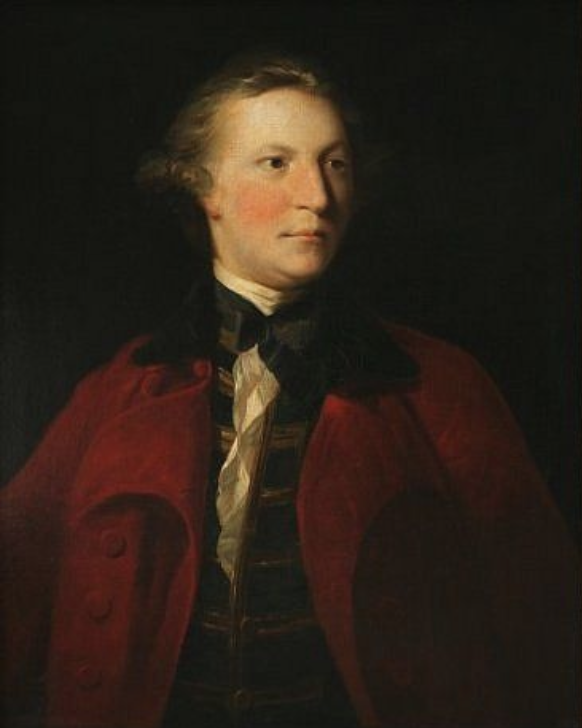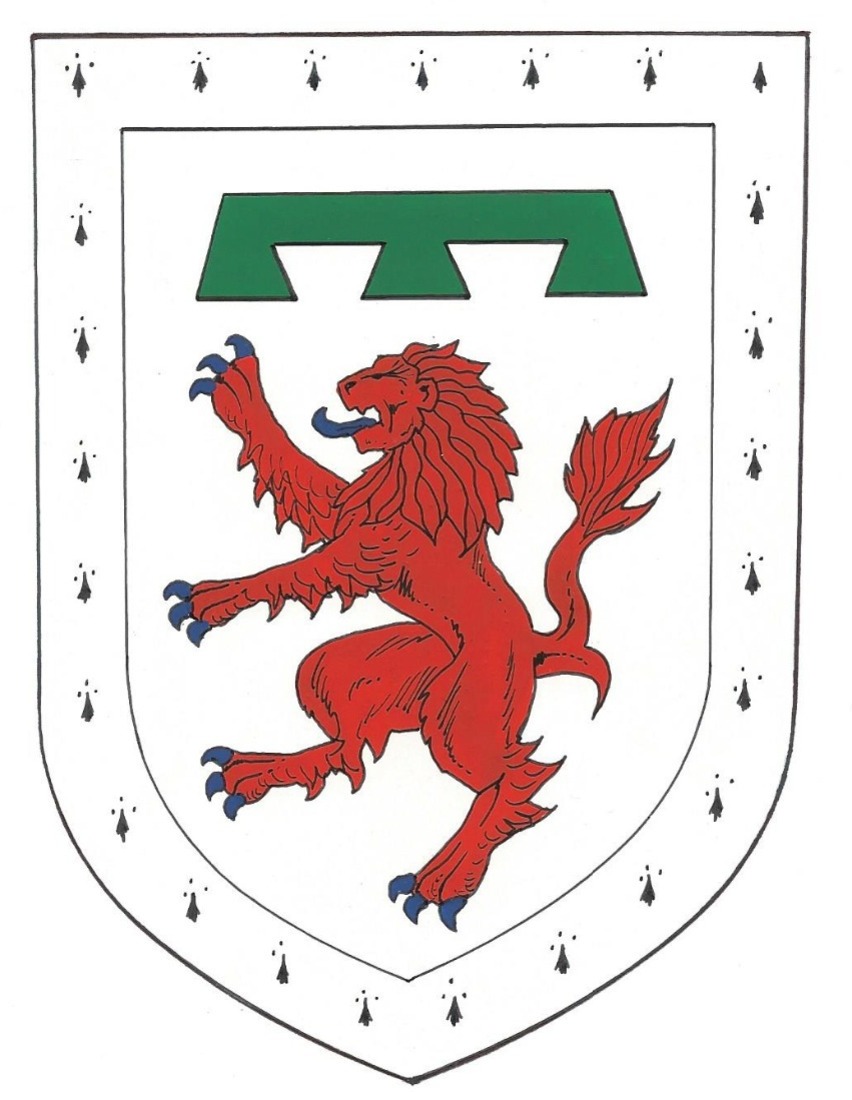Alexander Montgomery 10th Earl of Eglinton
Sovereign Grand Commander 1757-1768


Alexander Montgomery, 10th Earl of Eglinton, the fifth son of Alexander Seton Montgomery, 9th Earl of Eglinton but his second son (the first, James died young) with his third wife, Susanna Montgomery, Countess of Eglinton.* with whom he had eleven children, three sons and eight daughters, was born in February 1723 and succeeded to the title of 10th Earl of Eglinton and 11th Lord Montgomery in February 1729. His father had three sons and six daughters by his first two wives with the males all dying young.
During the Jacobite uprising the Clan Montgomery under the Clan Chief, the 9th Earl supported the British Government and during the first uprising in 1715 the Earl was involved in training Ayrshire men as soldiers for the Government and became a Privy Councillor for King William and Queen Anne. Alexander his son, the 10th Earl, was initially educated at the grammar school of Irvine then progressed to Haddington and in October 1738 moved to England to attend Winchester College in Hampshire where he remained beyond the usual school age. In 1742 he went to Paris where he became proficient in dancing, fencing and riding. Having a life long interest in agriculture he spent a great deal of time and money in developing his estate in Ayrshire as well as organising and presiding over an agricultural society. He also planned and built the conservation village of Eaglesham in 1679 which was formed in the shape of his initial, the letter A. Although his agricultural improvements were innovative and spread throughout Ayrshire, they did not find favour with his tenants who did not take kindly to the changes to their old customs, despite one report of the time which painted a bleak picture of Ayrshire and its agricultural methods. This report described Ayrshire as having few practicable roads and ditches with fences being few and where they were, they were in bad condition and the land being overrun with weeds and rushes. The farm houses themselves were described as little more than “mere hovels,” the cattle starving and the people wretched.
In 1750 at the ripe old age of 27 Alexander became Grand Master of the Grand Lodge of Scotland, a position he held until 1751 and was also reputed to be the “Knight of the Red Feather” a mysterious Masonic figure. Between 1659 and 1661, he was Governor of Dumbarton Castle and on the accession of King George III, became Lord of the Bedchamber a position he held between 1760 and 1767and from 1761 until 1769 he was also a Representative Peer of Scotland.
In the early 1760`s he spent some time in London where he had an apartment in Queens Street Mayfair and whilst there became a patron of James Boswell, Doctor Samuel Johnson’s friend and biographer.
The earl himself has been described as being a sportsman and a rake that loved singing and was prominent in the Catch Club, distinctly able but very indolent. At one time he seriously considered resigning his peerage so as to have a career in the House of Commons. Boswell, who at one stage wanted to be a priest or a monk, ran away to London from Glasgow when summoned home to Edinburgh by his father. Contacted in London by the Earl of Eglinton, Boswell was persuaded to forgo the church for a commission in the army but the Earl was unable to persuade Prime Minister Bute to arrange a commission in the Guards (although he was offered one in a marching regiment, which would be stationed abroad, but refused this maintaining he only wished to join the Guards so he would incur minimal duties and be stationed in London). Professor F. Pottle† claimed that the Earl “rescued Boswell from religious error by making him a libertine.” Or as someone else put it, the Earl introduced him to the delights of the seedier side of London “making him a more complete libertine.”
The Earl of Eglinton introduced young Boswell to a brilliant society where he met members of the Jockey Club, the Duke of York, heir presumptive to the throne as well as a number of the literary giants of the day including the author Laurence Sterne.
The Earl also met and spent time with Doctor Samuel Johnson as Boswell later wrote that “the Earl who loved wit more than wine and men of genius more than sycophants had a great admiration of Doctor Johnson.” Details of their time together are contained in Boswell’s London Journal 1762-1767.
Back on his estates in Ayrshire in 1769 the Earl confronted an excise man and poacher, Mungo Campbell, whose father had been Provost of Ayrshire, and who it was reported not for the first time had been trespassing on Montgomery land and in the altercation that followed near the beach at Parkhouse on his Ardrossan estate, Alexander was shot in the stomach (a contemporary newspaper erroneously first recorded the incident as a duel over a woman). He died the following day and although Campbell was found guilty of the murder, he escaped the hangman’s noose by committing suicide in prison before his sentence could be carried out. The populous expecting a hanging and feeling cheated dug up Campbell’s body and vented their fury upon it. It was retrieved by his family and he was reburied at sea to save any further desecration.
The carriage that carried the Earl back to his home after having been shot was inscribed with details of the tragedy and was retained by the family until the great sale of Eglinton Castles` contents in the 1920`s.
It is said that his mother never got over her sons’ death and as a consequence retired from society. She was further devastated by the attitude of many of the Montgomery estate tenants who had more sympathy for Mungo Campbell than the earl and saw his death as a punishment imposed by heaven due to the “ misimprovements of his life and the still more irritating improvements of his estate, his changes of old customs and interference with old tenants.” The British Museum has a print of a drawing by Samuel Wale of Mungo Campbell sitting on the ground with his rifle and shooting Lord Eglinton.
At the time of his death, Alexander although unmarried, was engaged to Jane or Jean Montgomery, daughter of John Maxwell of Pollock House near Glasgow (a house he had visited many times), she was the widow of James Montgomery of Laidshaw who was the brother of James Boswells` wife Margaret Montgomery. He had however, according to Boswell, also been living with a Mrs Brown†† for seven or eight years. At the hour of his mortal wounds it is said that a servant at Pollock House was surprised to see the Earl walk up the stairs to the room reserved for his visits. The servant prepared him a meal; however, the Earl was nowhere to be found and it was sometime later when the awful news reached the Maxwell family.
Alexander was succeeded by his younger brother Archibald who became the 11th Earl, very much a military man he rose to the rank of Major General and fought in the French revolutionary wars, he also went to America and fought with George Washington against the French; as well as against the Cherokee Indians and was a patron of Robert Burns.
A portrait of this General Montgomery hangs in Windsor Castle.
As a matter of interest, in April 2010, the auctioneers, Bonham’s of Knightsbridge London advertised the auction of the following a “Highly Unusual 12 bore Silver Mounted Flintlock Sporting Gun” owned by Alexander Montgomery, 10th Earl of Eglinton, previously sold in December 1925 at the Eglinton Castle sale in Edinburgh.
In March 2016 a book entitled “The Laird and the Excise Man” was published by a historian from Kilwinning, Jim Kennedy who maintained that the popular story of the Laird’s murder was inaccurate. Kennedy argues that the disagreement between Eglinton and Campbell had nothing to do with poaching but that there was bad blood between the two men as a result of Campbell arresting Eglinton`s favourite servant Alexander Bartleymore whom he had caught smuggling and subsequently escaped punishment as a result of the Laird’s intervention. On the morning of their meeting Campbell was not alone but in the company of his friend John Brown; they had been shooting on land adjacent to the Eglinton estate with permission of the owner, however having no luck with their shooting they headed for the beach by crossing Eglinton land. It was here the Laird intercepted them and during a heated argument Campbell fell backwards just as the Earl made a grab for his gun but before he could get to it Campbell pulled the trigger. Kennedy also claims Campbell received a surprising level of support from influential people and was represented in court by three of Scotland’s top lawyers
*Susanna Montgomery, Countess of Eglinton the daughter of Sir Archibald Kennedy, 1st Baronet of Culzean, was third wife of the 9th Earl of Eglinton. She was a renowned social beauty who spent some time at the court of King George II who described her as “the most beautiful woman in my dominions.” Was she I wonder the Montgomery’s Lady referred to in the folk song Cam Ye O`er Frae France which contains the following verse?
“Jockey’s gone tae France And Montgomery’s lady,
There they’ll learn to dance, Madam are ye ready.
They’ll be back belyve, belted brisk and lordly,
Brawly may they thrive to dance a jig wi` Geordie.”
She was obviously proud of her beauty, once asking her daughter Lady Bette (Elizabeth) “What would you give to be as beautiful as I am” to which her daughter replied rather cleverly I think, “Not half of what you would give to be as young as I am.” Despite her sojourn in the Royal court she subsequently refused to attend George III`s coronation in 1760 because of her Jacobite sympathies. This perhaps being another example of how family loyalties were split in those days as her maternal grandfather was General David Leslie 1st Lord Newark who successfully led the Scottish army supporting the English Parliament at the battles of Marston Moor and Philiphaugh.
Susanna’s daughter Helen married Francis Stuart, 3rd son of James, 8th Earl of Moray while another of her daughters, Lady Margaret MacDonald was involved with Flora MacDonald in assisting Bonnie Prince Charlie to hide, and escape from Scotland, despite the fact that her husband Sir Alexander MacDonald of Sleat was at the time at Fort Augustus with the Duke of Cumberland, leader of the Government forces at Culloden.
†Professor Frederick Pottle was an American academic reputedly “the greatest Boswellian scholar in history.”
†† James Boswell met Mrs Brown on many occasions as he also stayed with Lord Eglinton and his opinion of her seems to have changed fairly quickly from initially being enamoured of her to one of genuine dislike. On 10th March 1762 he wrote “Mrs Brown, she is a good-looking woman, and I dare say is the best of her profession that ever existed. She is quiet, good humoured and diligent” However, by the 14th of May in the same year he was writing “Every time I sleep at the Earl’s, I must however complain against fate that Mrs Brown stays in his house. For I really find her to be such a gawky, and so much of a low censorious Scots lass that I am just in a rage, or rather a discontent with her.” Also living with the Earl and Mrs Brown was the long-term housekeeper Mrs Reid who Boswell tells us was a Jacobite.


























